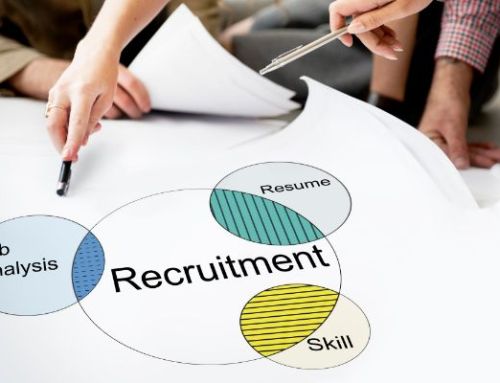An unprecedented increase in job openings shows that the demand for talent is forcing companies to plan better and recruit better. Workforce planning and HR analytics have become a key focus point for HR professionals around the world, as they confront new challenges in finding and retaining the right employees.
The most recent JOLTS, or Job Openings and Labor Turnover Survey published by the US Bureau of Labor Statistics, puts the the latest job openings level registered in November 2015 at 5,431,000(p).
“Companies cannot hire fast enough to keep up with their workforce demands.”
As technology advancements in HR system are bringing in more data and key insights into the dynamic of workplaces, workforce planning is becoming an essential business process for companies of all sizes.
The challenge of workforce planning
Many companies struggle with this process, as it involves aligning talent management with business objectives, so that a company can meet its regulatory, service and production requirements. Workforce planning is a finance-led process for a great majority of companies, focused primarily on managing headcount to budget to ensure there are no cost overruns. The standard procedure is that average cost-per-headcount allocations are made, and hiring is closely monitored. But is this approach still viable in today’s workplaces?
The latest data shows that it’s not. A recent survey by Harvard Business Review Analytic Services found that for the vast majority of respondents, inadequate workforce planning has prevented them from meeting business goals. In fact, the majority of leaders surveyed (73 percent) have experienced talent gaps leading to missed business objectives as a result of poor workforce planning.
Deloitte’s 2015 “Global Human Capital Trends” Report confirms this, with only 5 percent of HR professionals believing that their workforce planning process is “excellent,” while one-third say it’s “adequate” and nearly 60 percent call it “weak.” Moreover, in a recent SilkRoad survey, 36% of the HR managers interviewed said that not having access to analytics that allow them to have a clear picture of their workforce is a major concern.
But while company leaders recognize the necessity of a carefully mapped-out workforce planning, they are not taking action to improve the situation.
“These results don’t surprise me. (…) Only a small percentage of organizations do anything more than headcount planning.”
Karen O’Leonard, director of global client solutions at consultancy Towers Watson and former vice president of analytics at Bersin by Deloitte via
Workforce planning tools and strategies
Some companies have managed to stay ahead of the curve and acknowledge this challenge early on, which has allowed them to develop the tools and strategies to surpass it. By combining financial forecasts with headcount management and their talent acquisition pipeline, these companies have created their own models for workforce planning. Download our white paper on improving the employee experience using people analytics and see how you can leverage data to improve workforce planning.
California energy utility Pacific Gas & Electric Co., or PG&E, is one such example – they’ve successfully created workforce-planning platform that can help them predict any disruptions to the industry and minimize any negative impact on their business operations, in terms of talent management. Using the Human Capital Institute’s strategic workforce planning certification program as a model, they created an eight modules software solution, designed to walk business-unit leaders through a workforce forecasting process (via TalentManagement).
Other companies have also started from a simple framework of questions and have continued to build on them until they got a viable tool or strategy. Data collection is the first step and it’s usually a lengthy one. After collecting enough data regarding employment, attrition, necessary skills and performance metrics, most companies proceed to benchmarking them against ideal metrics and industry standards. Linking these metrics to specific behaviors and processes then enables them to predict future trends and minimize financial losses.
Who owns the workforce planning process?
Throughout this process, there are several stakeholders involved, each with their specific role. While the HR function is primarily responsible for designing and implementing a workforce planning strategy, there’s no doubt that executive leadership, finance, as well as line and functional managers are essential players.
Executive leadership is responsible for involving the entire C-Suite in setting business directions which will become a key part of the workforce planning process, just as the finance function should offer key insights into the financial implications of a company’s talent management operations.
Functional, line and program managers, on the other hand, can offer valuable workforce insights such as required skills, experience and performance that both current and future talent acquisitions should meet.
Leveraging HR Analytics
Julia Howes at Mercer Workforce Analytics & Planning recommends that strategic workforce planning start with gaining strategic insights on organisation imperatives and talent implications for your company. This analysis needs to be followed-up with a measurement of talent gap risks, meaning talent demand, workforce gaps and risks, and talent supply.
As you dive into modelling your talent management plan, you need to consider quantity, quality and location. Mercer’s workforce analytics and planning model takes into account a talent development, talent acquisition, contingent workforce talent deployment and retention strategy, while also taking into account a possible change in business strategy triggered by the previous steps. Once this planning is done, you need to decide on the people practice and programmes to ensure talent attraction, retention, engagement, career development, performance management, rewards and recognition, leadership development and workforce mobility.
Sylvia Vorhauser-Smith, a global talent management consultant and Forbes contributor also advises on a series of key actions to help you run human capital and talent management strategies parallel to your business goals:
- “Make workforce planning and strategic business planning parallel processes.
- Ensure your leadership values data-driven decision-making and promotes a culture of objective transparency.
- Invest in a sophisticated data engine with analytical tools to generate meaningful workforce information.
- Combine internal, external, structured and social data to produce deep insights into talent availability and shortfalls.
- Hire HR specialists who are adept at data modelling, interpretation and forecasting.”
via Forbes
All in all, it’s important to keep in mind that while this is a long-term planning and implementation process, it’s also prone to changes that can happen from one day to another. Workforce planning is a continuous process that is highly susceptible to changes in the market or in the talent pool, requiring CHROs to stay flexible in their decision making process. That can only happen if they have access to real-time data and analytics, which can guide them into taking the right decisions for both short-term success and long term growth.
Download the white paper and see how you can create an integrated, engaging employee experience using people analytics!
Image licensed from Dollarphotoclub.com






Leave A Comment